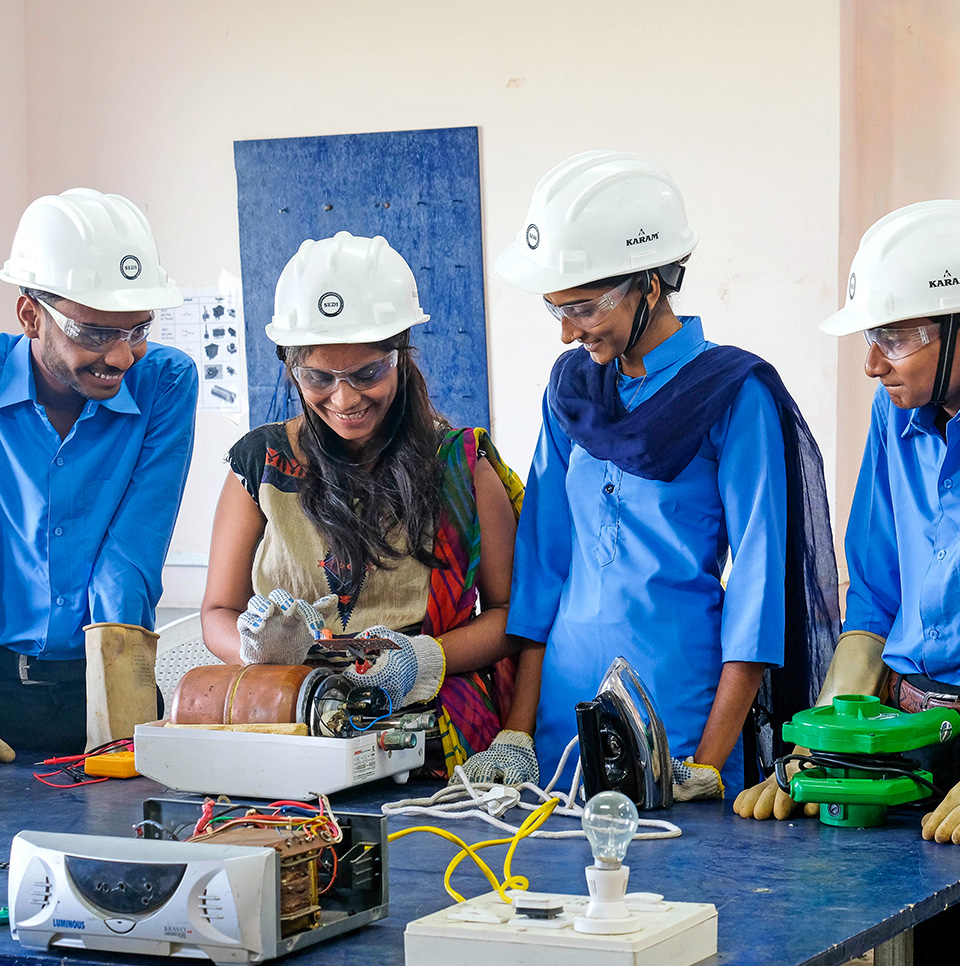
Businesses should promote inclusive growth and equitable development
Our relationships with business partners, consumers, and external stakeholders are pivotal to us, and we emphasise amplifying the value we provide to them. We use our extensive distribution network to deliver high-quality products that meet a wide range of needs while providing value-added services that promote sustainable construction. These efforts have increased customer engagement and strengthened our relationships with local suppliers and distributors. As a responsible corporate entity, we actively contribute to the communities where we operate, seeking mutual benefits for all stakeholders.
Zero
Projects undertaken required Rehabilitation and Resettlement
51 Crore
CSR Spent on community development
Community Advisory Panel
at site level
Essential Indicators
1. Details of Social Impact
Assessments (SIA) of projects undertaken by the entity based on
applicable laws, in the current financial year.
|
Name and brief details of project
|
SIA Notification No.
|
Date of notification
|
Whether conducted by independent external agency (Yes / No)
|
Results communicated in public domain (Yes / No)
|
Relevant Web link
|
|---|---|---|---|---|---|
|
Social Impact Assessment is a part of EIA for getting Environment
Clearance for projects. All projects listed in Question No
12 of Principle 6 have SIA component in-built as part of the
study carried out. In addition, assessing social impacts
of the CSR projects is an ongoing process at ACF, that continues
to assess social impacts using platforms such as Social
Engagement Scorecard (SES), Community Advisory Panel (CAP) etc.
Any social impacts emerging out of these platforms is
seriously considered and factored into annual workplan and
activities of Ambuja Cement Foundation. In FY 24, we
measured Social Returns on Investment (SROI) for three of our
livelihood interventions programmes in three blocks of Howrah
District, West Bengal. The programmes are 1)
Agriculture-based Livelihood (ABL) Program, which aims to double
farmers’ income by introducing innovative farming
techniques 2) The Women Empowerment Program (WEP) focuses on
economic empowerment and gender equality and 3) Skill
& Entrepreneurship Development Institute (SEDI) that
provides vocational training to underprivileged youth,
enhancing their employability and fostering entrepreneurship.
The period of the study was between 2019-20 to 2021-22.
The SROI ratio for the ABL program is 9.87, WEP program is 3.99
and for the SEDI program is 6.35. The results of the analysis
will be helpful to optimise value by including stakeholder
voices. The SROI value helps to gauge the program
effectiveness, improve program management, and enhance
understanding and communication of CSR impacts.
|
|||||
2. Provide information on
project(s) for which ongoing Rehabilitation and Resettlement
(R&R) is being undertaken by your entity, in the following
format:
|
Sr. No.
|
Name
of Project for which R&R
is ongoing
|
State
|
District
|
No. of Project Affected
Families (PAFs)
|
(PAFs) % of PAFs covered by
R&R
|
Amounts
paid to PAFs in the FY (In
E)
|
|---|---|---|---|---|---|---|
|
NIL
|
||||||
3. Describe the mechanisms
to receive and redress grievances of the community.
ACF acts like a bridge between the plant and the community. The concerns and grievances from the community are taken to Plant Head by ACF team. ACF facilitates the issue based discussion with community and the plant as may be suggested by the Head. Each plant also has a CSR committee where concerns of the community are shared and discussed with senior plant team. Ambuja plants have Community Advisory Panel (CAPs), a formal forum consisting of stakeholders representatives including senior team at plant, where issues and concerns of the community are discussed and resolved.
4. Percentage of input
material (inputs to total inputs by value) sourced from suppliers:
|
|
FY 2023-24 (Current
Financial Year)
|
FY
Jan 2022 Mar 2023* (Previous
Financial Year)
|
|---|---|---|
|
Directly
sourced from MSMEs/ small
producers
|
2.24%
|
1.01%
|
|
Sourced
directly from within the
district and neighbouring
districts
|
92.96%
|
97.14%
|
5. Job creation in smaller
towns – Disclose wages paid to persons employed (including employees
or workers employed on a permanent or non-permanent/on contract
basis) in the following locations, as % of total wage cost
|
|
FY 2023-24 (Current
Financial Year)
|
FY
Jan 2022-23 (Previous
Financial Year)
|
|---|---|---|
|
Rural
|
17.29%
|
8.95%
|
|
Semi-urban
|
12.22%
|
5.50%
|
|
Urban
|
59.77%
|
11.95%
|
|
Metropolitan
|
10.71%
|
73.60%
|
(Place to be categorised as per RBI Classification System – rural/semi-urban/urban/metropolitan)




